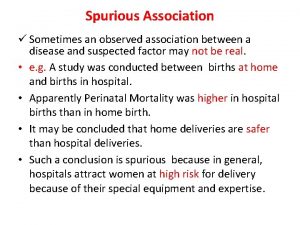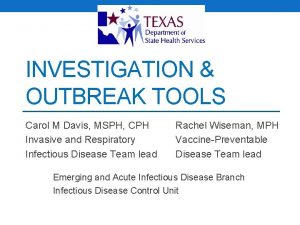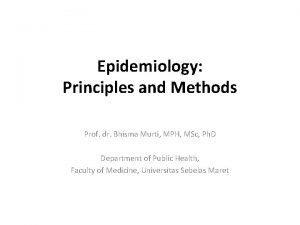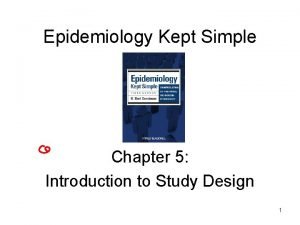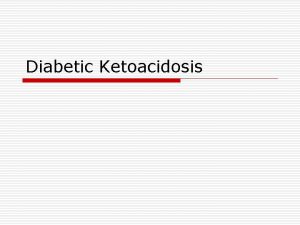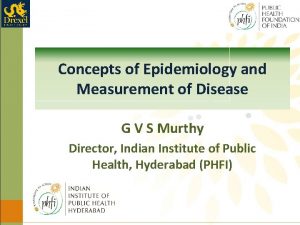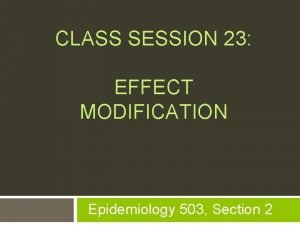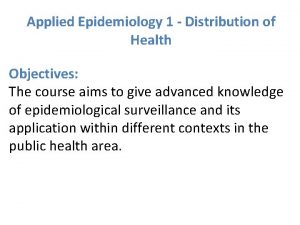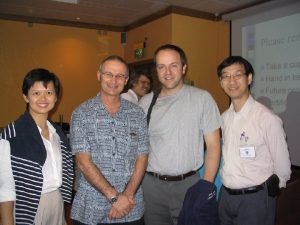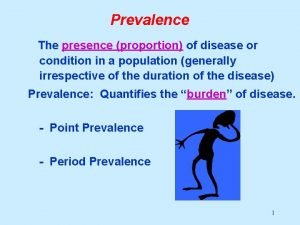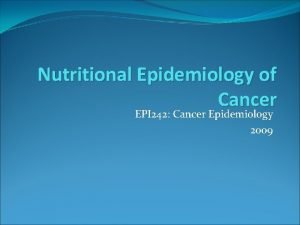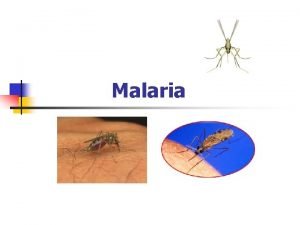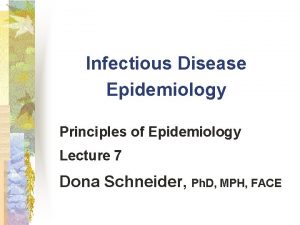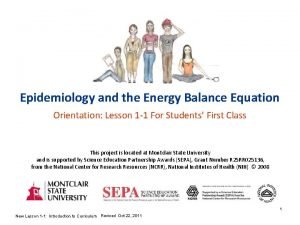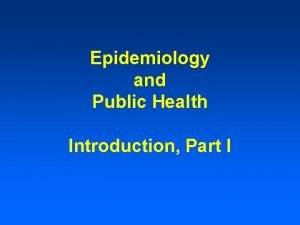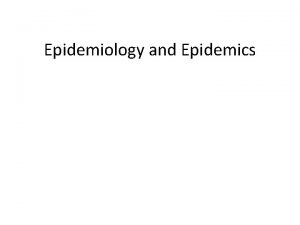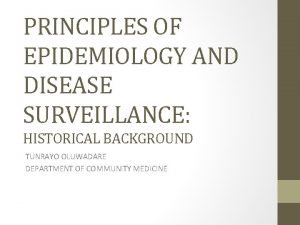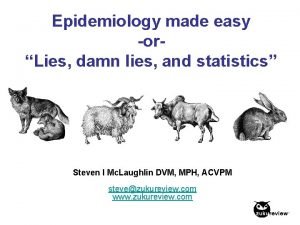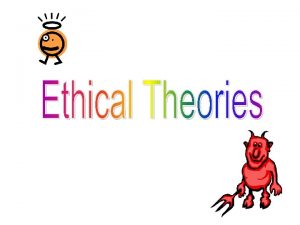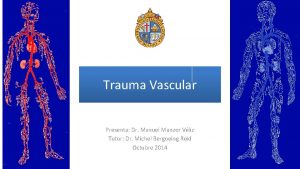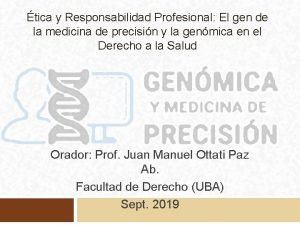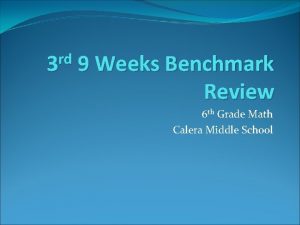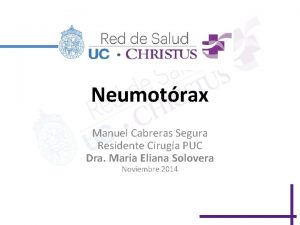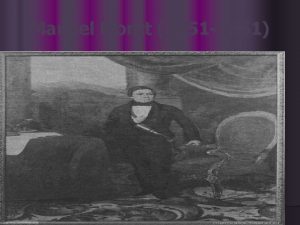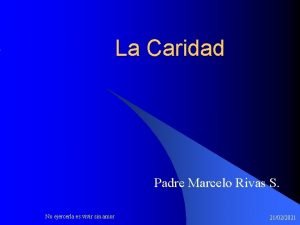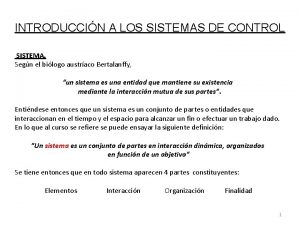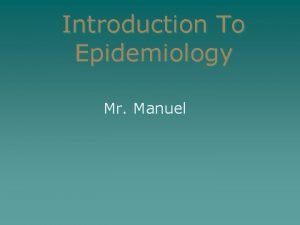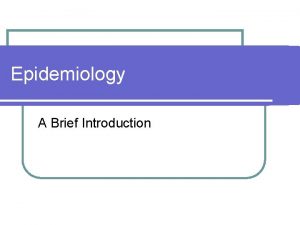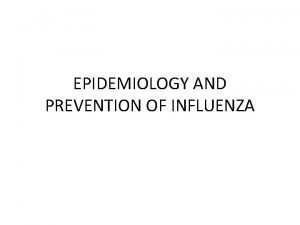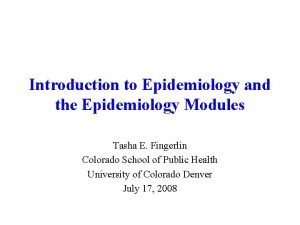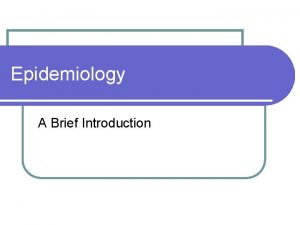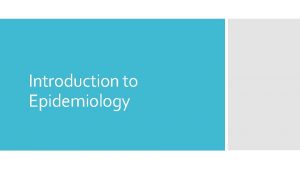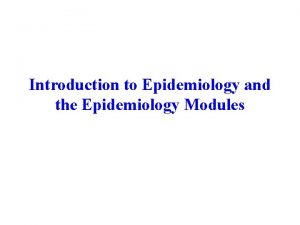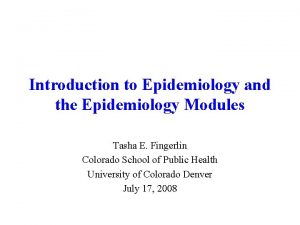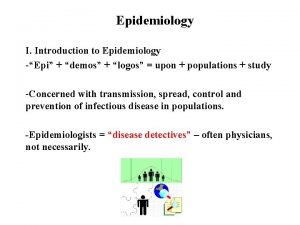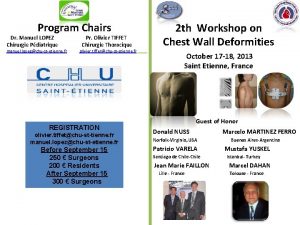Introduction To Epidemiology Mr Manuel What is Epidemiology
























































- Slides: 56

Introduction To Epidemiology Mr. Manuel

What is Epidemiology?

Definition of Epidemiology Last JM: A Dictionary of Epidemiology The study of the distribution and determinants of health related states and events in populations and the application of this study to control of health problems

What Is The Unique Skill Of Epidemiologists? Measuring disease frequency in populations

Measuring Disease Frequency Has Several Components ü Classifying and categorizing disease ü Deciding what constitutes a case of disease in a study ü ü Finding a source for ascertaining the cases Defining the population at risk of disease ü Defining the period of time of risk of disease ü Obtaining permission to study people ü Making measurements of disease frequency ü Relating cases to population and time at risk

Two Broad Types of Epidemiology DESCRIPTIVE EPIDEMIOLOGY Examining the distribution of a disease in a population, and observing the basic features of its distribution in terms of time, place, and person. ANALYTIC EPIDEMIOLOGY Testing a specific hypothesis about the relationship of a disease to a putative cause, by conducting an epidemiologic study that relates the exposure of interest to the disease of interest. Typical study design: community health survey (approximate synonyms - cross Typical study designs: cohort, case-control -sectional study, descriptive study)

The Basic Triad Of Descriptive Epidemiology THE THREE ESSENTIAL CHARACTERISTICS OF DISEASE WE LOOK FOR IN DESCRIPTIVE EPIDEMIOLOGY ARE: PERSON u PLACE u TIME u

Person (characteristics? ) u Age u Gender u Socio-economic status (education, occupation, income) u Marital status u Ethnicity/race/genetic profile u Behavior / habits

Place (where ? ) Geographically restricted or widespread (outbreak, epidemic, pandemic)? Off-shore (tsunami…) u Climate effects (temperature, humidity, combined effects. . ) u Urban / sub-urban-squatter / rural u Relation to environmental exposure (water, food supply, etc) u Multiple clusters or one? u

Time (when ? ) u Changing or stable? u Clustered (epidemic) or evenly distributed (endemic)? u Time-trends: Point source, propagated, seasonal, secular, combinations

Data Collection Methods Primary: where the investigator is the first to collect the data. Sources include: medical examinations, interviews, observations, etc. Pros: less measurement error, suits objectives of the study better. Cons: costly, may not be feasible. u Secondary: where the data is collected by OTHERS, for other purposes that those of the current study. Sources include: individual records (medical / employment); group records (census data, vital statistics) u

Descriptive Epidemiology Is A Necessary Antecedent Of Analytic Epidemiology To undertake an analytic epidemiologic study you must first: u Know where to look u Know what to control for u Be able to formulate hypotheses compatible with laboratory evidence

A common error in epidemiology is moving to analytic epidemiology without having a solid base in the descriptive epidemiology of the condition.

Epidemiologists are required to have some knowledge of the disciplines of the following: 1. public health, because of the emphasis on disease prevention. 2. clinical medicine, because of the emphasis on disease classification and diagnosis.

3. pathophysiology, because of the need to understand basic biological mechanisms in disease. 4. statistics, because of the need to quantify disease frequency and its relationships to antecedents. 5. social sciences, because of the need to understand the social context in which disease occurs and presents.

Purposes Of Epidemiology 1. 2. 3. 4. 5. Identify causes and risk factors for disease. Determine the extent of disease in the community. Study natural history and prognosis of disease. Evaluate preventive and therapeutic measures Provide foundation for public policy

EVERY HEALTH OUTCOME HAS SOME INTERESTING AND USEFUL EPIDEMIOLOGIC CHARACTERISTIC DEATH RATES BY SOCIAL CLASS FROM A CERTAIN CAUSE AMONG 1, 316 PEOPLE Men Women Children Total 1 st class 67% 3% 0 38% 2 nd class 92% 14% 0 59% 3 rd class Total 84% 82% 54% 26% 66% 48% 62% WHAT CAUSE OF DEATH IS THIS?

The previous slide shows death rates by class of ticket on the Titanic, a large ocean liner that sank after colliding with an iceberg in 1912

Pandemic Influenza Phases u u Time: Mondays and Wednesdays 4: 10 -5: 20 p. m. Office hours: BY ARRANGEMENT Place: Room A -131 East Fee Hall – Department of Epidemiology classroom. Person: Nigel Paneth, Instructor. u 353 -8623; paneth@msu. edu

WHO phases of pandemic alert Phase 4 u u u Verified human-to-human transmission of an animal or human-animal influenza able to cause “community-level outbreaks. ” The ability to cause sustained disease outbreaks in a community. Indicates a significant increase but not necessarily pandemic

Phase 5 Human-to-human spread of the virus into at least two countries in one WHO region. While most countries will not be affected at this stage u Is a strong signal that a pandemic is imminent and that the time to finalize the organization, communication, and implementation of the planned mitigation measures is short. u

Phase 6 (pandemic phase) u Community level outbreaks in at least one other country in a different WHO region in addition to the criteria defined in Phase 5. u Indicate that a global pandemic is under way.

Differences Between Laboratory Sciences And Field Sciences In the Field: Mostly observational u Variables controlled by nature u Some variables unknown u Replication difficult; exact replication impossible u Results often uncertain u Meaning of results for humans clear u Statistical control often very important u Highly labor intensive u

Differences Between Laboratory Sciences And Field Sciences In the Laboratory: • Mostly experimental • Variables controlled by the investigator • All variables known • Replication easy • Results valid • Meaning of results for humans uncertain. • Little need for statistical manipulation of data. • Highly equipment intensive

The Basic Triad Of Analytic Epidemiology THE THREE PHENOMENA ASSESSED IN ANALYTIC EPIDEMIOLOGY ARE: HOST AGENT ENVIRONMENT

Host u Age u Socio-economic u Gender u Ethnicity/Race u Behavior status

Host Factors u Genetic endowment u Immunologic state u Age u Personal behavior

Agent Living/Non-living u Species u Behavior u Habitat u If the agent is human, gender, race etc. are factors u Examples: Nutrients, Poisons, Allergens, Radiation, Physical trauma, Microbes, Psychological experiences u

Environment u Crowding u Atmosphere u Modes of communication – phenomena in the environment that bring host and agent together, such as: – Vector – Vehicle – Reservoir

Environment u Geographically restricted or widespread (pandemic)? u Relation to water or food supply. u Multiple clusters or one?

Analytic Epidemiology

Study Development Process Descriptive Studies: Data Collection and Analysis Analyze results and retest Model Building and hypothesis formulation Analytic Studies for Hypothesis testing

Study Designs Analytic Epidemiology u Experimental Studies – Randomized controlled clinical trials – Community trials u Observational Studies – Group data u. Ecologic – Individual data u. Cross-sectional u. Cohort u. Case-control

Experimental Studies u treatment and exposures occur in a “controlled” environment u planned research designs u clinical trials are the most well known experimental design. Clinical trials use randomly assigned data. u Community trials use nonrandom data

Observational Studies u non-experimental u observational because there is no individual intervention u treatment and exposures occur in a “non-controlled” environment u individuals can be observed prospectively, retrospectively, or currently

Cross-sectional studies u An “observational” design that surveys exposures and disease status at a single point in time (a cross-section of the population) time Study only exists at this point in time

Cross-sectional Studies u Often used to study conditions that are relatively frequent with long duration of expression (nonfatal, chronic conditions) u It measures prevalence, not incidence of disease u Example: community surveys u Not suitable for studying rare or highly fatal diseases or a disease with short duration of expression

Cross-sectional Design factor present No Disease factor absent Study population factor present Disease factor absent time Study only exists at this point in time

Epidemiologic Study Designs u Case-Control Studies – an “observational” design comparing exposures in disease cases vs. healthy controls from same population – exposure data collected retrospectively – most feasible design where disease outcomes are rare

Case-Control Studies Cases: Disease Controls: No disease

Case-Control Studies u Strengths – Less expensive and time consuming – Efficient for studying rare diseases u Limitations – Inappropriate when disease outcome for exposure is not known at start of study – Exposure measurements taken after disea occurrence – Disease status can influence selection of subjects

Case- Control Design factor present factor absent Cases (disease) Study population factor present Controls (no disease) factor absent present past time Study begins here

u Epidemiologic Study Designs Cohort Studies – an “observational” design comparing individuals with a known risk factor or exposure with others without the risk factor or exposure – looking for a difference in the risk (incidence) of a disease over time – best observational design – data usually collected prospectively (some retrospective)

disease Cohort Des ign Factor present Study population free of disease Factor absent no disease present future time Study begins here

Timeframe of Studies u Prospective Study - looks forward, looks to the future, examines future events, follows a condition, concern or disease into the future time Study begins here

Prospective Cohort study Exposed Outcome Non-exposed Outcome Measure exposure and confounder variables Baseline time Study begins here

Timeframe of Studies u Retrospective Study - “to look back”, looks back in time to study events that have already occurred time Study begins here

Retrospective Cohort study Exposed Outcome Non-exposed Outcome Measure exposure and confounder variables Baseline time Study begins here

Cohort Study u u Strengths – Exposure status determined before disease detection – Subjects selected before disease detection – Can study several outcomes for each exposure Limitations – Expensive and time-consuming – Inefficient for rare diseases or diseases with long latency – Loss to follow-up

Experimental Studies u investigator can “control” the exposure u akin to laboratory experiments except living populations are the subjects u generally involves random assignment to groups u clinical trials are the most well known experimental design u the ultimate step in testing causal hypotheses

Experimental Studies In an experiment, we are interested in the consequences of some treatment on some outcome. u The subjects in the study who actually receive the treatment of interest are called the treatment group. u The subjects in the study who receive no treatment or a different treatment are called the comparison group. u

Epidemiologic Study Designs u Randomized Controlled Trials (RCTs) – a design with subjects randomly assigned to “treatment” and “comparison” groups – provides most convincing evidence of relationship between exposure and effect – not possible to use RCTs to test effects of exposures that are expected to be harmful, for ethical reasons

Epidemiologic Study Designs u Randomized Controlled Trials (RCTs) – the “gold standard” of research designs – provides most convincing evidence of relationship between exposure and effect utrials of hormone replacement therapy in menopausal women found no protection for heart disease, contradicting findings of prior observational studies

outcome Experimental Design RANDOMIZATION Intervention no outcome Study population outcome Control no outcome baseline future time Study begins here (baseline po

Randomized Controlled Trials u. Disadvantages –Very expensive –Not appropriate to answer certain types of questions uit may be unethical, for example, to assign persons to certain treatment or comparison groups

Credits All information modified from these sources: u Nigel Paneth at the University of Pittsburgh u Thomas Songer, Ph. D - University of Pittsburgh Modified by Supercourse team u Ahmed Mandil, MBCh. B, Dr. PH Prof of Epidemiology High Institute of Public Health University of Alexandria
 Perbedaan or rr dan pr
Perbedaan or rr dan pr Define nutritional epidemiology
Define nutritional epidemiology Logistic regression epidemiology
Logistic regression epidemiology Prevalence calculation example
Prevalence calculation example Descriptive vs analytic epidemiology examples
Descriptive vs analytic epidemiology examples Attack rate calculation
Attack rate calculation Thesourceagents
Thesourceagents Epidemiology person place time
Epidemiology person place time Descriptive vs analytical epidemiology
Descriptive vs analytical epidemiology Incidence and prevalence meaning
Incidence and prevalence meaning Pros and cons of cross sectional study
Pros and cons of cross sectional study Example of recall bias
Example of recall bias Attack rate calculation
Attack rate calculation Ramboman
Ramboman Model of disease causation
Model of disease causation Defination of epidemiology
Defination of epidemiology Defination of epidemiology
Defination of epidemiology Endemic definition in community health nursing
Endemic definition in community health nursing What is descriptive study in epidemiology
What is descriptive study in epidemiology Spurious association in epidemiology
Spurious association in epidemiology Field epidemiology ppt
Field epidemiology ppt Aims of epidemiology
Aims of epidemiology Certification board of infection control and epidemiology
Certification board of infection control and epidemiology Gordon nichols
Gordon nichols Epidemiology kept simple
Epidemiology kept simple Diabetic ketoacidosis epidemiology
Diabetic ketoacidosis epidemiology Distribution in epidemiology
Distribution in epidemiology Confounding vs effect modification
Confounding vs effect modification Distribution in epidemiology
Distribution in epidemiology Ramboman analysis
Ramboman analysis Epidemiology definition
Epidemiology definition Prevalensi adalah
Prevalensi adalah How dr. wafaa elsadr epidemiology professor
How dr. wafaa elsadr epidemiology professor Nutritional epidemiology
Nutritional epidemiology Mp under microscope
Mp under microscope Attack rate epidemiology
Attack rate epidemiology How dr. wafaa elsadr epidemiology professor
How dr. wafaa elsadr epidemiology professor Epidemiology definition
Epidemiology definition Seven uses of epidemiology
Seven uses of epidemiology Epidemiological triad
Epidemiological triad Celiac beri beri
Celiac beri beri Epidemiology made easy
Epidemiology made easy Claire andre and manuel velasquez
Claire andre and manuel velasquez Vascular
Vascular Juan manuel ottati paz
Juan manuel ottati paz Manuel vicent comentario de texto 2021
Manuel vicent comentario de texto 2021 Ben earns $12 800 a year
Ben earns $12 800 a year Victor manuel ugalde saldivar
Victor manuel ugalde saldivar Manuel roxas contribution in the philippines
Manuel roxas contribution in the philippines Clasificacion del neumotorax
Clasificacion del neumotorax 3 t’s ng pakikilahok at bolunterismo
3 t’s ng pakikilahok at bolunterismo Ano ano ang kahulugan ng naisulat mo sa mga dahon
Ano ano ang kahulugan ng naisulat mo sa mga dahon Kumpletuhin ang sumusunod na concept map
Kumpletuhin ang sumusunod na concept map Manuel montt obras
Manuel montt obras Le guide de la parfaite femme au foyer dans les années 50
Le guide de la parfaite femme au foyer dans les années 50 Manuel rivas caridad
Manuel rivas caridad Ogata
Ogata



















